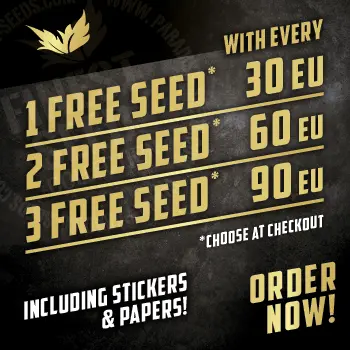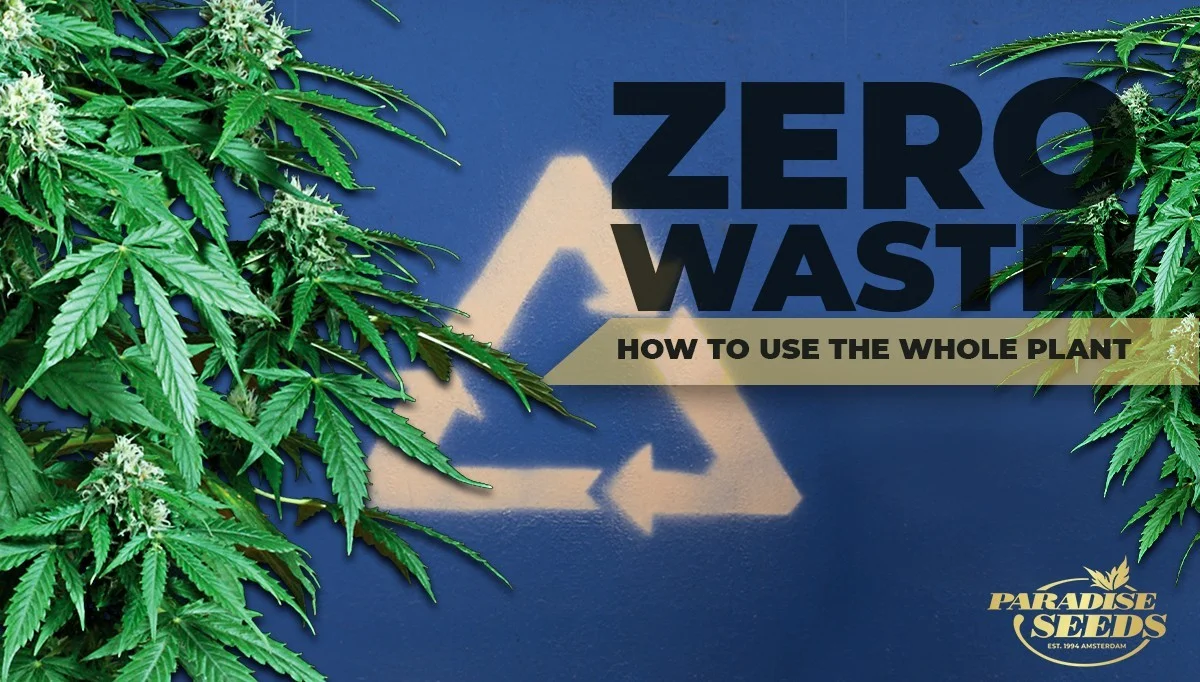For today’s generation of cannabis consumers it is hard to imagine a time when ‘weed’ was anything other than a handful of perfect, crystal covered buds. But it was not always this way… Believe it or not, before seed companies like Paradise Seeds brought cannabis growing to the masses, there was so little knowledge and growing expertise that often ‘homegrown grass’ (in the West) would consist of a bag of badly dried weed plant leaves!
Such an idea sounds ridiculous in the present day (just another reminder of how much knowledge we hold in our tiny hands thanks to internet technology)! and, thankfully, those days are long gone. So what happens to marijuana plant leaves these days? For most growers they are a by-product, the waste left over from trimming cannabis buds, which needs to be disposed of.
But if you think about it, that’s a whole lot of plant that’s headed for the trash, so is there something else you can do with all that vegetation?
Using Cannabis Fan Leaves
Cannabis fan leaves are iconic in shape and big in size. Their purpose in life is to channel the sun’s energy into healthy plant growth (through photosynthesis) and they also draw in carbon dioxide and produce oxygen (doing their bit for the planet in the process!).
The fan leaves of the cannabis plant have very little in the way of active cannabinoids but they do have trace levels of compounds which have been shown to have benefits for the body’s endocannabinoid system, such as CBD, CBN and CBG .
Cannabis as a Raw Food
Those big leaves are just made for juicing and they will give your body a natural boost thanks to the cannabinoid acids that are active in the leaves in their raw form – THCA and CBDA, which have anti-inflammatory properties – as well as a whole range of omega fatty acids, vitamins, terpenes and flavonoids. Leaves can be chopped up in a blender (straining is recommended to get rid of plant bits) and added to other ingredients or enjoyed as a fan leaf shot!
Cannabis Tea
Dried cannabis leaves have been used as a tea with medical properties (chiefly as a relaxation aid or a herbal tonic to settle the stomach) since humans first started using the cannabis plant. Although the process involves heat, it is unlikely to release the psychoactivity of the plant’s THC content (a more focused decarboxylation process is needed for this).
Using Cannabis Sugar Leaves
Cannabis sugar leaves are those found around the flower (bud) of the plant and will often have an attractive sprinkling of trichomes (crystals) and this resinous matter contains more THC than fan leaves. Due to the harshness of ‘the smoke’ they are also sacrificed at harvest time. However, these little leaves can be used to make cannabis butter.
Turn Sugar Leaves into Cannabis Butter
Collecting the trichome dusted sugar leaves together provides the base ingredients for making cannabis butter (also known as cannabutter or weed butter), which provides the basis for most recipes involving cannabis edibles. It is necessary to perform decarboxylation to turn their THCA content into psychoactive THC, which involves chopping the leaves up small and then baking in the oven then adding them to a fat, such as butter or coconut oil, and letting it simmer over a low heat. While sugar leaves on their own will create a substance with a certain level of psychoactivity, most cannabutter makers will add in some buds to increase the potency.
Homemade Cannabis Hash (Kief)
If all that heating and cooking sounds like a bit too much hard work, then take a leaf out of the Moroccan book and make your own ‘kief’. This substance is basically a trichome harvest and is created by combining bud (usually the shrapnel that wouldn’t make it into the prize buds jar!) and trichome covered sugar leaves. This mixture is refined, usually by rubbing over a mesh or screen, to collect the crystals which gather in a powdery form that can be sprinkled and consumed. While it takes a bit of time, it’s an all natural method and a potent mix!
Use Cannabis Plant Waste as Compost
An obvious way of using the whole marijuana plant is simply to chop it up small – stalks, roots and all – and re-use it in the garden in the form of compost in order to grow the next generation of little cannabis plants!



